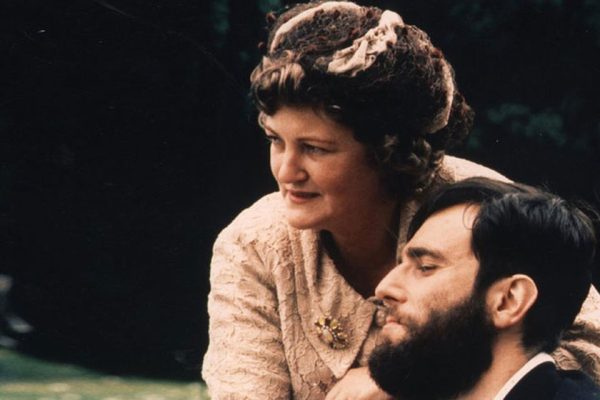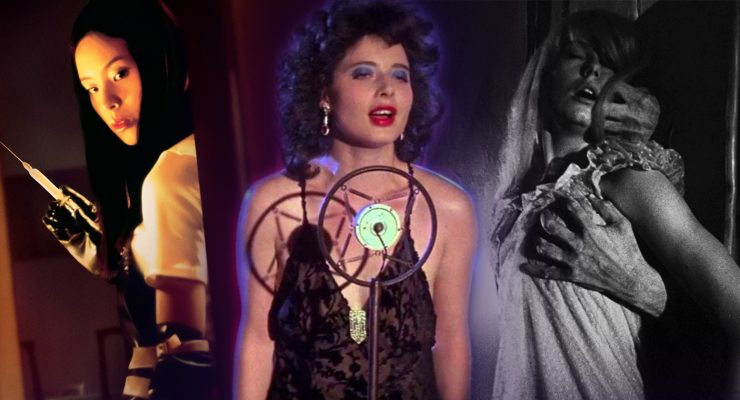Hasitha Fernando looks at the story behind My Left Foot…
My Left Foot left an indelible impression on many a viewer for a number of reasons. Firstly, it featured an unforgettable performance by the inimitable Daniel Day-Lewis and secondly, the film became a landmark in cinematic representation of disability. The effort also brought some richly-deserved attention to Irish artist Christy Brown and by extension to the medical affliction known as cerebral palsy. 35 years on from its U.S. release, here are some interesting behind-the-scenes details about the making of the film…
Christy Brown’s story was a tragic one
Christy Brown was diagnosed with the most severe form of cerebral palsy called spastic quadriplegia shortly after his birth in 1932. This meant that his upper and lower limbs, trunk, and face were severely affected by the disease. But these physical limitations didn’t stop Brown, the 10th child of a brood of 22 children, from achieving worldwide fame as an acclaimed artist as well as a prolific writer, and by the conclusion of his eclectic career the creative was considered one of the most unique creative voices of the 20th century. My Left Foot, which was based on Brown’s book of the same name, chronicles the trials and tribulations of most of his life as a poverty-stricken sickly child to a conflicted adult endowed with a heaven-sent talent.
Jim Sheridan has a personal connection to the story
Before Jim Sheridan found success with My Left Foot in 1989, he was mainly involved with theatre productions and along with his brother were involved with writing and staging plays in the late 70s. After migrating to Canada for a brief period Sheridan returned to his home country of Ireland and decided to have a crack at making his first feature length film. For his debut movie Sheridan decided to adapt Christy Brown’s book My Left Foot since it was a story he had a personal connection with, having grown up near where the artist lived and having known of him.
Daniel Day-Lewis did intense preparation before the shoot
Nowadays regarded as one of the greatest actors in the history of cinema, Daniel Day-Lewis too hailed from a heavy theatre background similar to director Jim Sheridan. He excelled on stage performing for the National Youth Theatre before being accepted to the Bristol Old Vic Theatre School, which he attended for a period of three years. However, in spite of rich classical theatre background Day-Lewis went on to embrace a form of extreme method acting whenever he took on a cinematic role, and My Left Foot was no exception.
For his preparation for the role of Christy Brown, Day-Lewis spent months studying cerebral palsy sufferers including spending a considerable amount of time at the Sandymount School clinic in Dublin. What interested Day-Lewis in the project was the opening scene in the script, which featured him, as Brown, using his left foot to place the phonograph record on the player and placing the needle onto it with surgical precision, so that it would play. He knew that it would be physically impossible to achieve that level of dexterity, and this detail intrigued him. Unsurprisingly, Day-Lewis acted out this opening scene to perfection, as we see in the movie, in one mind-blowing take when the cameras were rolling.
The insane physical transformation of Day-Lewis inconvenienced many
As a practitioner of method acting Day-Lewis left no stone unturned in his effort to embrace the role of the spastic quadriplegia ridden Christy Brown. According to the “Making of My Left Foot” segment on the Special Edition DVD, the actor broke two of his ribs during filming due to the fact that he assumed a hunched-over position in his wheelchair for weeks at a time. Day-Lewis also would refuse to come out of character, even between takes, when the cameras weren’t rolling. This ticked off the film crew and technicians since they found the idea of wheeling around an able-bodied individual and helping him out with mundane day-to-day activities completely ridiculous. Day-Lewis even extended the same courtesy to his agent when he came around to visit him during the shoot. Naturally this didn’t sit well with him, and the frustrated chap cancelled the appointment and promptly took off.
Judi Dench was originally cast as Mrs. Brown
Widely considered one of Britain’s greatest actresses Dame Judi Dench has garnered various accolades in a career spanning over six decades winning an Academy Award, a Tony Award, two Golden Globe Awards, four British Television Awards, six British Academy Film Awards and seven Olivier Awards. She would have been able to add another feather to her cap if she stuck on and played Mrs. Brown, the role she was originally cast as in My Left Foot. But fate intervened, and the talented actress had to sadly withdraw from Mrs. Brown’s role when the National Theatre production of Anthony and Cleopatra was rescheduled. This resulted in Irish actress Brenda Fricker being cast in the now vacant role.
A blessing in disguise for Brenda Fricker
A lot of people may be unfamiliar with actress Brenda Fricker’s name but if I were to jog your foggy memories and tell you that this is the same actress that played the “Pigeon Lady” in Home Alone 2: Lost in New York (1992) you’d probably remember who Fricker is. But I digress. Once Dame Judi Dench vacated the role of Mrs. Brown, that was meant to be played by her, director Jim Sheridan and the producers were left in a bit of a pickle. They then reached out to Fricker who was based in Dublin, and she gladly accepted the challenge. Come awards seasons the gifted Irish actress was bestowed with the Academy Award for Best Supporting Actress, in recognition of her contribution to the film. A nigh impossible achievement considering she was acting alongside Day-Lewis.
Elmer Bernstein composed the score for free
The late Elmer Bernstein is considered one of Hollywood’s most prolific composers producing over 150 original film scores and crafting some of the most memorable themes in the industry with critically acclaimed movies such as The Ten Commandments (1956), The Magnificent Seven (1960), To Kill a Mockingbird (1962) and The Great Escape (1963). Bernstein first met My Left Foot’s producer Noel Pearson when he visited Dublin in 1968 when the former was scoring the music for Where’s Jack? (1969). The pair became good friends from there on and one day bumped into none other than Christy Brown in a pub. There, Pearson confided in Bernstein of his plan to one day make a biopic on Christy Brown, and the musician promised that if Pearson ever gets the opportunity to make it, he will compose the soundtrack for free. Twenty years later, Bernstein kept his word and fulfilled that promise by doing the score for My Left Foot free of charge.
Box-office wins, awards love & universal acclaim
Produced on a budget of 600,000 British Pounds My Left Foot went on to rake in $14.7 million at the worldwide box-office, which was a fairly significant achievement for an indie-film hailing from UK. But where the movie really struck gold was during awards season. 1989 was a year which saw a slew of sensational, awards-worth movies such as Dead Poets Society, Driving Miss Daisy, Glory and Born on the Fourth of July get released. And amongst these stunning efforts, which eventually went on to garner awards at the 62nd Academy Awards ceremony, there was My Left Foot getting some heavy consideration as well.
One major reason for this attention was the insane publicity and much-deserved push given by Miramax, who spent over three times the movie’s production budget to get the film noticed for Oscar consideration. The other contributory factor was, of course, the astounding performances given forth by Daniel Day-Lewis and Brenda Fricker under the direction of first-time filmmaker Jim Sheridan. Though the flick ended losing out on the Best Picture, Best Director, and Best Adapted Screenplay categories for which it was nominated, it ended up bagging the golden nudies for Best Actor and Best Supporting Actress for Day-Lewis’ and Fricker’s contributions respectively.
The universal acclaim My Left Foot received was truly richly deserved with top film critics like Roger Ebert showering glowing praise on the poignant effort. It is an exceptional story of the persevering nature of the human spirit told in an exceptional manner, eschewing the usual Hollywood frills and melodrama. Roger Ebert summed up his reflection of the movie by writing thus, “My Left Foot is a great film for many reasons, but the most important is that it gives us such a complete picture of this man’s life. It is not an inspirational movie, although it inspires. It is not a sympathetic movie, although it inspires sympathy. It is the story of a stubborn, difficult, blessed, and gifted man who was dealt a bad hand, who played it brilliantly, and who left us some good books, some good paintings, and the example of his courage. It must not have been easy.”
In the end My Left Foot is a movie that challenges us all, by making us look deep within ourselves and question why we haven’t realized our true potential? Is it a lack of opportunity or sheer laziness? Christy Brown achieved worldwide acclaim as an author and a painter by overcoming insurmountable odds. And he did so while being confined to a wheelchair and by using part of his functional limb. So, the question I’m asking you is, “what’s stopping you from unlocking your true potential or greatness?”
What are your thoughts on My Left Foot? Let us know on our social channels @FlickeringMyth…
Hasitha Fernando is a part-time medical practitioner and full-time cinephile. Follow him on Twitter via @DoctorCinephile for regular updates on the world of entertainment.




















